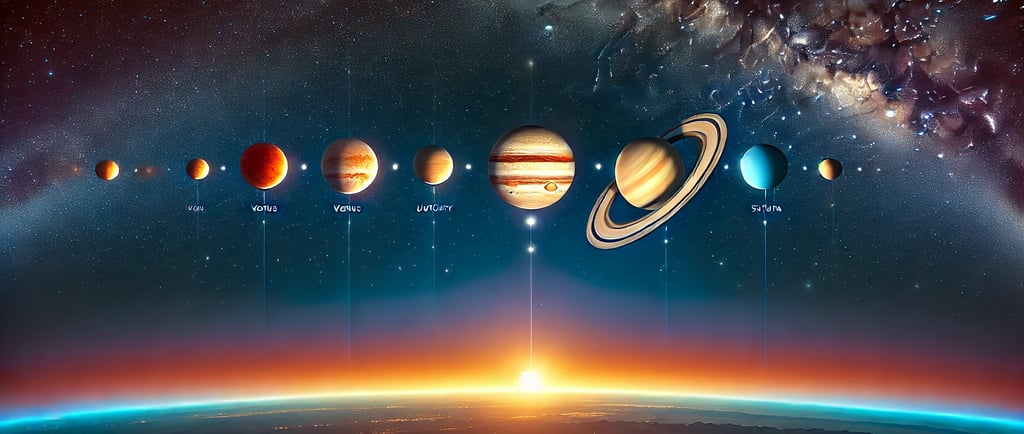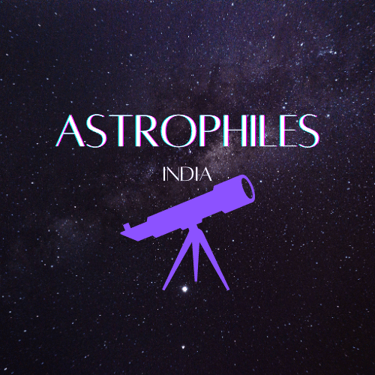What's All the Buzz About the "Planetary Alignment Event" of January 2025?
Explore the science and myths behind the planetary alignment of January 2025, a stunning celestial event visible from India, inspiring curiosity and connecting us to the cosmos.
THIS MONTHSPACE NEWS
Sandeep Poddar
1/16/20254 min read


Every now and then, celestial events capture the imagination of people worldwide. In January 2025, the buzzword floating around is the "planetary alignment event." But what exactly is it? Is it as rare as claimed? And, most importantly, are the grandiose myths surrounding it true? As responsible science communicators, let’s unravel the science, separate fact from fiction, and explore why this cosmic dance is fascinating in its own right.
The Basics of Planetary Alignments
First things first: what do astronomers mean by "planetary alignment"? Contrary to popular belief, planetary alignments don’t mean that all planets in our solar system line up in a perfectly straight line. Such a configuration is almost impossible due to the varying orbital inclinations and distances of the planets. Instead, an alignment refers to planets appearing roughly in the same region of the sky from our Earthly vantage point.
This January, several planets—Venus, Mars, Mercury, Saturn, and Jupiter—will cluster within a relatively narrow angle in the night sky. While this is visually stunning and a treat for amateur astronomers, it’s important to manage expectations: the planets will not literally "line up" like pearls on a string.
A Spectacular Sight… If You Know When to Look
Mark your calendars! From January 19 to January 24, 2025, you’ll have a window to observe this celestial grouping. Here’s what to expect:
Venus and Jupiter will shine the brightest, easily visible even from light-polluted cities like Delhi or Mumbai.
Mars and Saturn will require darker skies to spot, though binoculars can help.
Mercury, being the smallest and closest to the Sun, will be trickier to see due to its proximity to the horizon.
For Indian stargazers, the best time to catch this event will be just after sunset. Look towards the western horizon, where the planets will slowly begin their cosmic ballet. It’s a rare chance to see so many planetary neighbors sharing the celestial stage.
Myths and Misconceptions
Let’s address the elephant in the room: the internet is abuzz with sensational claims about this event. Some say it will cause catastrophic earthquakes, others predict bizarre shifts in human behavior. Let’s bust these myths one by one.
1. Gravitational Chaos
One popular claim is that the gravitational pull of the aligned planets will disrupt Earth’s tectonic plates, causing massive earthquakes and volcanic eruptions. Here’s the reality: the gravitational influence of planets on Earth is negligible. Even when several planets align, their combined gravitational force is insignificant compared to the pull of the Moon and the Sun. In fact, the Moon’s effect on tides is far greater than anything a planetary alignment could achieve.
2. Changes in Human Behavior
Astrology enthusiasts often claim that planetary alignments influence human behavior. However, there’s no scientific evidence to back this up. While the alignment may inspire awe and curiosity, our moods, actions, and decisions are far more influenced by earthly factors like weather, diet, and sleep than by distant planets.
3. A Once-in-a-Lifetime Event?
While this alignment is special, it’s not unique. Planetary groupings occur every few years, though the specific configurations vary. The next similar event is expected in the 2030s. So, while you should absolutely enjoy this celestial spectacle, don’t fall for the hype that it’s a "never-before-seen" phenomenon.
The Science of Planetary Alignments
Why do alignments happen in the first place? The answer lies in the orbital mechanics of our solar system. Planets orbit the Sun in roughly the same plane, called the ecliptic. This shared plane means that, from our vantage point on Earth, planets often appear to cluster in the same region of the sky.
This particular alignment is made possible by the varying orbital periods of the planets. For example:
Mercury completes an orbit in just 88 days.
Venus takes about 225 days.
Jupiter, the giant, takes nearly 12 years.
The alignment in January 2025 is the result of these celestial clocks briefly synchronizing to create a visual spectacle.
How to Observe the Event
You don’t need a high-powered telescope to enjoy this alignment. Here’s how you can make the most of it:
Find a Dark Sky Location Light pollution can obscure your view, especially of dimmer planets like Saturn. Try visiting a rural area or a hill station. In India, locations like Ladakh, Coorg, or Spiti Valley are ideal.
Use Binoculars or a Telescope While Venus and Jupiter are visible to the naked eye, a pair of binoculars can enhance your experience. A small telescope will reveal Saturn’s rings or Jupiter’s moons.
Download a Stargazing App Apps like SkySafari, Stellarium, or Google Sky Map can help you locate the planets and identify other celestial objects in the vicinity.
Join an Astronomy Club Groups like the Ignited Minds Science Club and Astrophiles India often organize observation events. Joining such events can enrich your experience with guided tours of the night sky.
Why Does This Matter?
In an era dominated by screens and urban sprawl, celestial events like this remind us of our place in the cosmos. They provide a moment to pause, look up, and reflect on the vastness of the universe.
For students, this event is a gateway to exploring astronomy. Watching planets align can spark questions about gravity, orbital mechanics, and the history of our solar system. Who knows? It might even inspire the next generation of astrophysicists or space explorers.
Final Thoughts
The planetary alignment event of January 2025 is a cosmic spectacle worth watching, not because it heralds doom or mystical changes, but because it connects us to the rhythms of the universe. So, step outside, gather your friends and family, and let the planets remind you of the wonder that lies beyond our world.
And remember, science isn’t just about observing the heavens; it’s about understanding them. As Carl Sagan once said, "We are a way for the cosmos to know itself." This January, let’s continue that grand tradition by looking up and learning more.
Keywords: planetary alignment January 2025, celestial events 2025, planetary alignment myths, stargazing India, astronomy events January 2025, Venus Jupiter alignment, planets visible January 2025, how to watch planetary alignment, celestial phenomena India, astronomy for students
